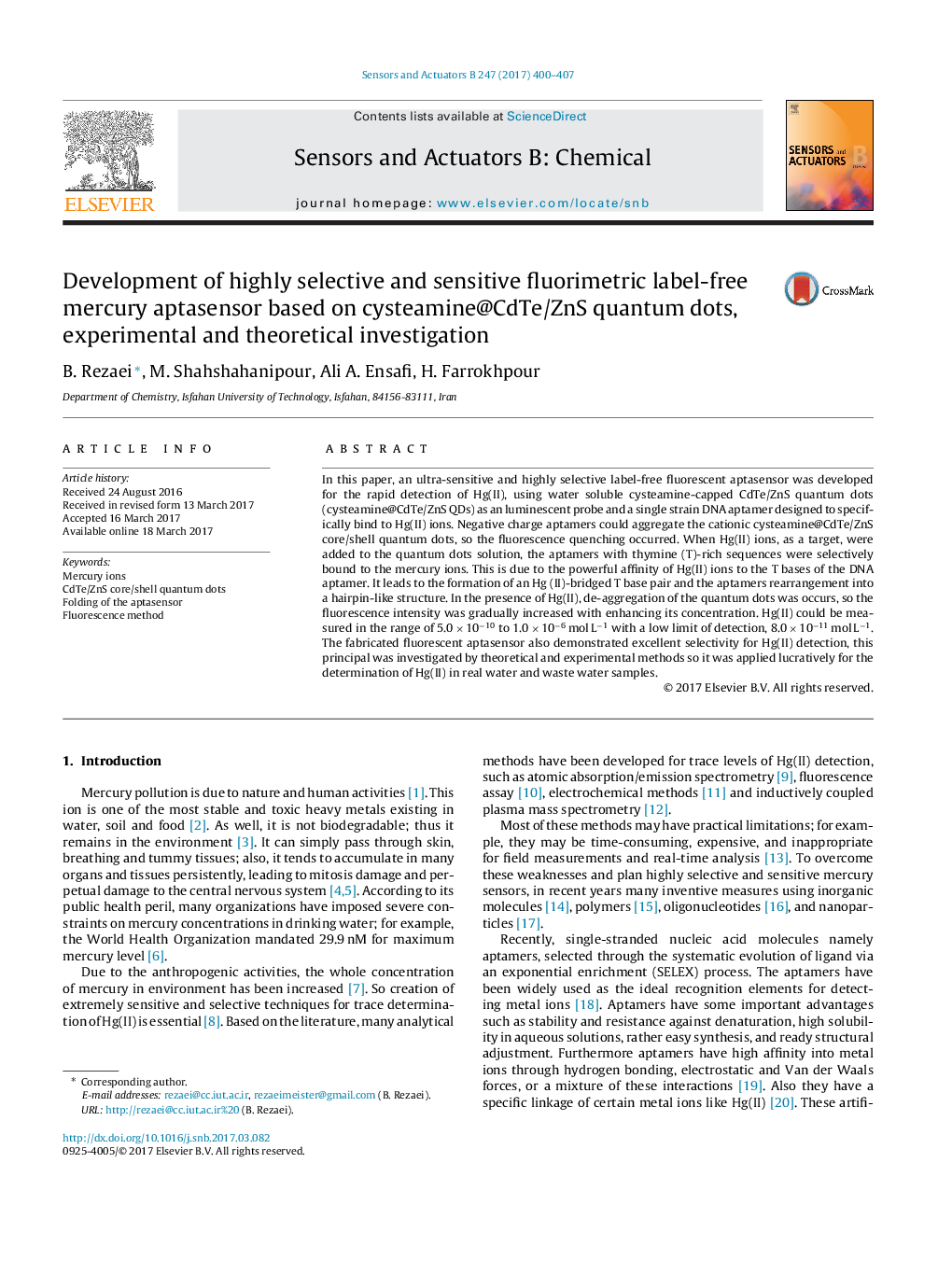| کد مقاله | کد نشریه | سال انتشار | مقاله انگلیسی | نسخه تمام متن |
|---|---|---|---|---|
| 5009387 | 1462044 | 2017 | 8 صفحه PDF | دانلود رایگان |

- New fluorimetric aptasensor developed to measure trace amount of Hg (II).
- The assay is based on aggregation of cysteamine-stabilized CdTe/ZnS core/shell QDs.
- A combination of experimental and theoretical investigation used to study.
- The aptasensor has high selectivity and high sensitivity to mercury ions.
- Detection limit of this method was 8.0 Ã 10â11 mol Lâ1 with wide linear range.
In this paper, an ultra-sensitive and highly selective label-free fluorescent aptasensor was developed for the rapid detection of Hg(II), using water soluble cysteamine-capped CdTe/ZnS quantum dots (cysteamine@CdTe/ZnS QDs) as an luminescent probe and a single strain DNA aptamer designed to specifically bind to Hg(II) ions. Negative charge aptamers could aggregate the cationic cysteamine@CdTe/ZnS core/shell quantum dots, so the fluorescence quenching occurred. When Hg(II) ions, as a target, were added to the quantum dots solution, the aptamers with thymine (T)-rich sequences were selectively bound to the mercury ions. This is due to the powerful affinity of Hg(II) ions to the T bases of the DNA aptamer. It leads to the formation of an Hg (II)-bridged T base pair and the aptamers rearrangement into a hairpin-like structure. In the presence of Hg(II), de-aggregation of the quantum dots was occurs, so the fluorescence intensity was gradually increased with enhancing its concentration. Hg(II) could be measured in the range of 5.0 Ã 10â10 to 1.0 Ã 10â6 mol Lâ1 with a low limit of detection, 8.0 Ã 10â11 mol Lâ1. The fabricated fluorescent aptasensor also demonstrated excellent selectivity for Hg(II) detection, this principal was investigated by theoretical and experimental methods so it was applied lucratively for the determination of Hg(II) in real water and waste water samples.
Journal: Sensors and Actuators B: Chemical - Volume 247, August 2017, Pages 400-407